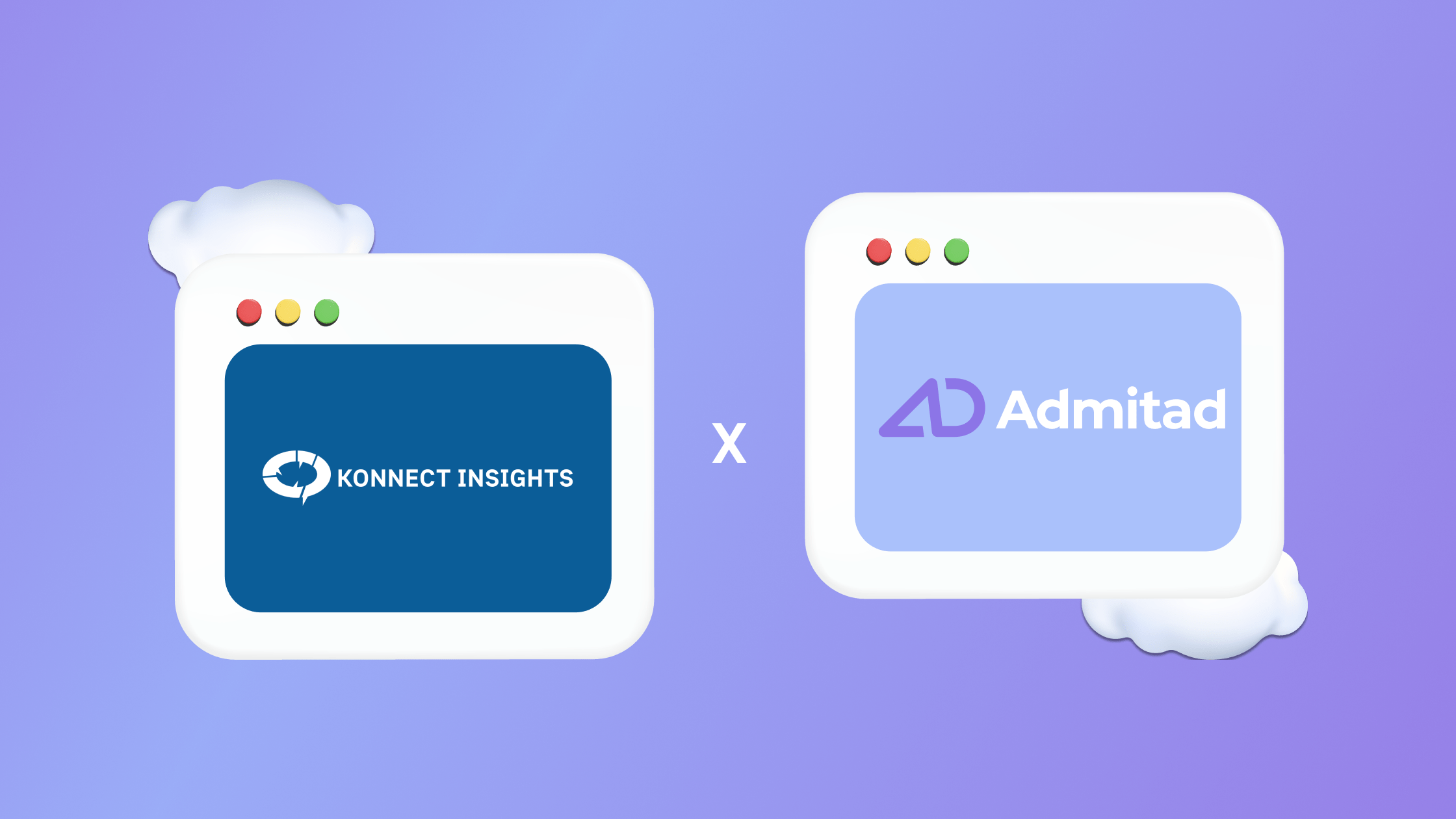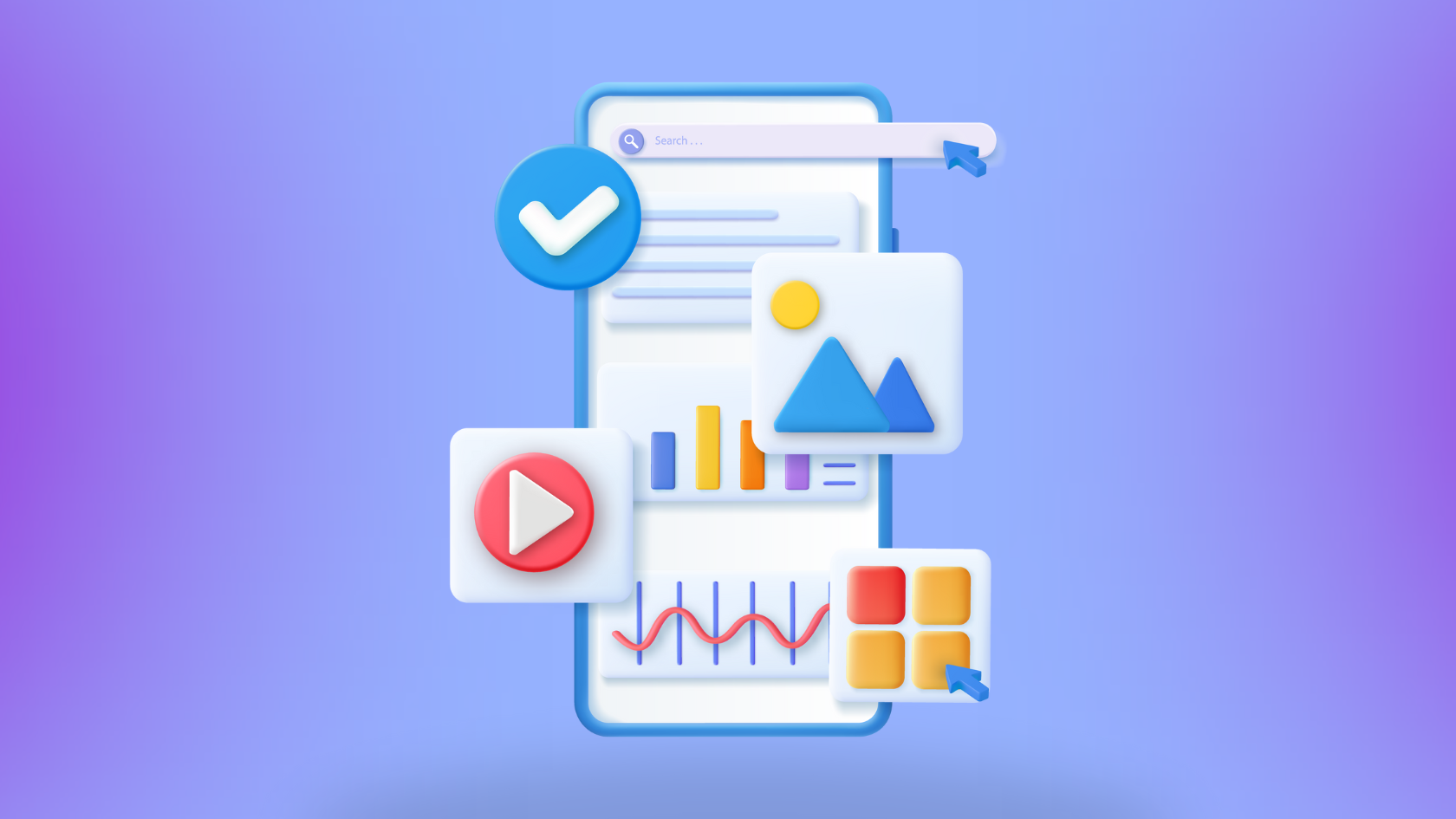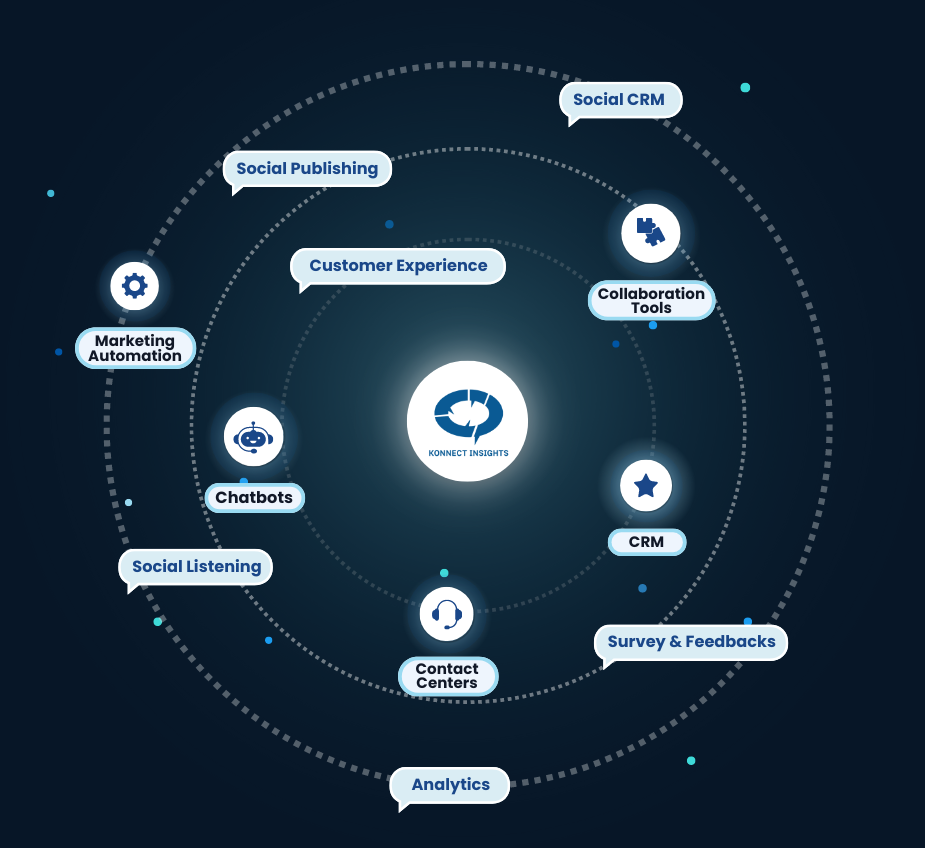We all know that being attentive and listening to someone having a conversation with you helps bridge gaps and build a successful relationship. In today’s world, there are many technological advances, and with that comes competition.
The use of social media has rapidly increased and is now one of the most beneficial channels to build your brand, keep your audience engaged, and drive revenue. Social listening is a powerful tool for monitoring and analyzing customer social data. It aids in the efficient planning of upcoming campaigns and assists the company in gaining a competitive advantage over competitors.
Why should you focus on social listening?
The answer is being customer-centric and exceeding customer expectations. By making social listening to a part of your business strategy, you can get clarity on the following:
- Finding out where your active users are situated globally.
- Identifying the days and hours when social engagement is at its highest.
- Staying informed on the subjects that interest the audiences.
- Observing how competitors’ brands are performing in terms of engagement.
Read Also – How Do You Develop A Social Listening Strategy?
What are social listening KPIs?
When used wisely, social listening has multi-fold benefits for businesses. Every aspect of the brand’s key performance indicators (KPIs) is critical to better understanding the customer base and meeting their expectations, thereby assisting business growth.
The top five social listening KPIs businesses should focus on are:
1. Brand awareness
How well do customers recognize your brand? Social media is where most conversations happen. Social listening will help monitor and collect data on how many people talk about your brand and products. These insights will help build more customer-focused campaigns to stay on top of everyone’s mind.
2. Market share
What is your brand’s market share, and how much of the market does the business control? A brand can improve its market share by giving customers what they want at the right time. By understanding how end users perceive the brand, you can focus on the critical problem areas to provide a better customer experience.
Read Also – 13 Tips To Improve Your Social Listening Strategy
3. Customer satisfaction
How happy are your customers with the brand and products? Developing a cogent social listening strategy will give unbiased visibility into what customers think about the brand. Their perception and open expression will allow you to focus on their pain points and improve product performance to drive business.
4. Net promoter score
What is the likelihood that customers will recommend you to others based on experience? This score is on trust and candid conversations customers have with others. Hyperlocal ads can be created and tested on small customer sizes to understand what part of the delivery strategy can be modified to drive better outcomes.
5. Conversion rate
How many leads make a purchase and join the customer base? Business strategy is strengthened with social listening as it helps the brand focus on keeping potential customers engaged. The brand can significantly improve conversion rates by providing customers with relevant information based on their buyer journey.
With Konnect Insights’ social listening capabilities, every brand can gain a clear understanding of its potential customer base against global benchmarks. This comprehension also aids your competitor analysis.
Reach KPIs
The most crucial KPI any brand should focus on is accessibility to customers. A business can only expand when its customer pool keeps growing.
1. Impressions:
Konnect Insights’ impression data tells you how many times your brand’s social content appeared on a customer’s social feed. This KPI will help analyze how often people see your posts.
2. Follower count:
When a potential lead follows your account, it’s the first step to conversion because they’re expressing interest in having a long-term relationship with the brand. Analyzing your follower count using a social listening tool’s comprehensive dashboard will help you understand if you are providing relevant content and information to your audience.
3. Audience growth rate:
As the business grows, it’s essential to have more potential leads following social pages to stay updated. With the growth insights from a social listening tool, you’ll gain visibility on how the follower count changes. This KPI will help you create the right content to keep the growth rate on an upward trend.
4. Reach:
The reach statistics from Konnect Insights’ report clearly show how many unique views your social content had. With the help of our accessible comparison tables, you can analyze how effective the content your brand shared was against the impression metrics.
5. Potential reach:
When trying to grow the brand visibility and create a funnel for the potential base, potential reach becomes an important metric offered by a social listening tool like Konnect Insights. Potential reach is the number of people who could have engaged with your social page through your existing followers, as well as any mentions across platforms by individuals or other businesses.
6. Social share of voice:
A key competitor analysis metric, social share metrics help you understand how many people are having conversations about your brand compared to the competition. Make the most of social listening tools such as Konnect Insights and track your brand’s mentions against competitors at a certain period.
5 Social media engagement KPIs to Monitor
As a brand, to stay on top of the audience’s minds, there needs to be constant dialogue and engagement. The rate and quality of your followers’ engagement determine whether customers can connect with and benefit from the information shared.
1. Likes:
Analyzing the number of likes on each social post from your brand will help gauge what type of content works well with your audience and which ones don’t. This information will help make a better social strategy for future posts.
Read Also – 12 Companies With Great Social Listening Strategies
2. Comments:
Analyzing comments from the customer base can give your brand valuable insights into what they feel about your products and services. While positive comments improve reach and customer satisfaction, negative comments may hamper the brand’s social reputation.
3. Applause rate:
The applause rate refers to all positive brand interactions with the target audience. With intuitive social listening tools, it will be easy to filter and track positive reactions, so your social media works and amplify it accordingly.
4. Average engagement rate:
It’s normal for some posts to perform better than others, with many deciding factors differentiating it. With the help of an average engagement rate, your brand can determine what type of content works based on metrics like times, day, topic, age group, etc.
5. Amplification rate:
Remember all those reels unboxing the iPhone 14? That’s a great example of an amplification rate. This range provides data on how many fans shared your social content with their follower base. The higher the amplification, the greater the brand visibility and the meeting team KPIs.
5 Conversion KPIs to Track
When the audience interacts with the brand, you need to focus on guiding them through the funnel to turn them into customers. For the business to grow, good engagement must be accompanied by leads taking action to purchase.
1. Conversion rate:
This is an important metric that businesses should focus on improving. With insights into the conversion rate, you can evaluate how many users took action after interacting with the brand on a platform. Conversion rates will help you determine what information customers are interested in.
2. Click-through rate (CTR):
A social listening and analytics tool that will provide comprehensive data to help potential leads become customers by clicking the call to action (CTA). The percentage calculated between engaged viewers and those who took action is the CTR (click-through rate). This information is the base for making changes to the strategy to ensure that they take the next step to becoming paying customers.
3. Bounce rate:
Now, more than having a good click-through rate is needed. When people who have clicked to take an action but then abandon their purchase midway, they contribute to the bounce rate of that campaign. People who usually leave the intended action page back out. It shows that there needs to be a connection on the landing page. With the help of reports, you can plan the type of content that will drive potential leads to convert into customers.
4. Cost per click (CPC):
When you wish to drive specific actions from social media, paid promotion planning is important. A social analytics tool like Konnect Insights will help you analyze the cost incurred to get potential leads to click on the content shared. This will help you track the ROI on paid promotion campaigns across platforms so you can start, stop or continue efforts accordingly.
5. Cost per thousand impressions (CPM):
Sometimes, to stay relevant to the audience and increase brand recall, you may need to promote content across your digital channels. Specific costs will be involved to show your promoted content to more people. This is what CPM calculates. Paid promotion costs should be monitored to ensure that money is not burning for content that does not generate business.
Customer satisfaction KPIs to Track
Customer satisfaction is the ultimate goal of a brand. Online feedback and regular interactions with your brand, among other audiences, are vital to being customer-centric and meeting expectations.
1. Customer testimonials:
Customer testimonials are a powerful element of building trust and increasing the customer pool. With a tool like Konnect Insights, you can view ratings, save them, and work toward being solution-driven to improve customer satisfaction.
2. Customer satisfaction score (CSat):
Proactively taking constant feedback from customers is vital to improving customer service. The satisfaction results will help you focus on areas that need improvement to build trust and credibility and make the customers feel heard.
3. Net promoter score (NPS):
The NPS metric gives you an overview of the number of loyal customers the brand has. By gauging their satisfaction level, we can determine if they will suggest your brand to acquaintances, increasing word-of-mouth promotion and driving up sales. A great way to understand brand loyalty is by sharing a rating survey they can fill out. Rating surveyscan also give you information on what aspects of the brand require improvement.
Social listening best practices
Recognize buyer personas from your current clientele. This will guide you in developing the proper marketing efforts for the appropriate target market.
Choose what to listen for to get the right insights to raise brand awareness and marketability. The data analysis process can be streamlined, and relevant results can be produced by concentrating on the right pieces of information.
Use appropriate and well-researched keywords for data mining that the business can use to filter digital interactions. This could increase the visibility of consumer happiness and brand engagement across channels.
Utilize a social listening solution that enables businesses to collect and analyze social listening data to enhance marketing initiatives efficiently.
Create a plan for assessing the information gathered from social media sites. This social data will be valuable only if plans are made to leverage each insight to enhance the brand and consumer experience.
Conclusion
In a sense, adopting a customer-centric marketing strategy is all about customer care—just not in the conventional, compartmentalized, purely problem-solving sense. Accurate or incomplete data will put brand awareness, retention, and conversions at risk in the face of such intense competition to convert a single target pool.
Keep your brand on track by using social listening as a way to capture significant business KPIs. Basic metrics are offered by the majority of social media networks; however, they might not be sufficient in the long run.
Viewing your business data in one location is made possible with an intuitive dashboard, thorough analysis, and reports. With Konnect Insights as the platform, you can link all of your social media accounts, create goals, and voilà, the information you require is only one click away.






























